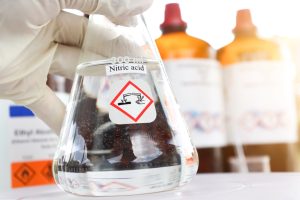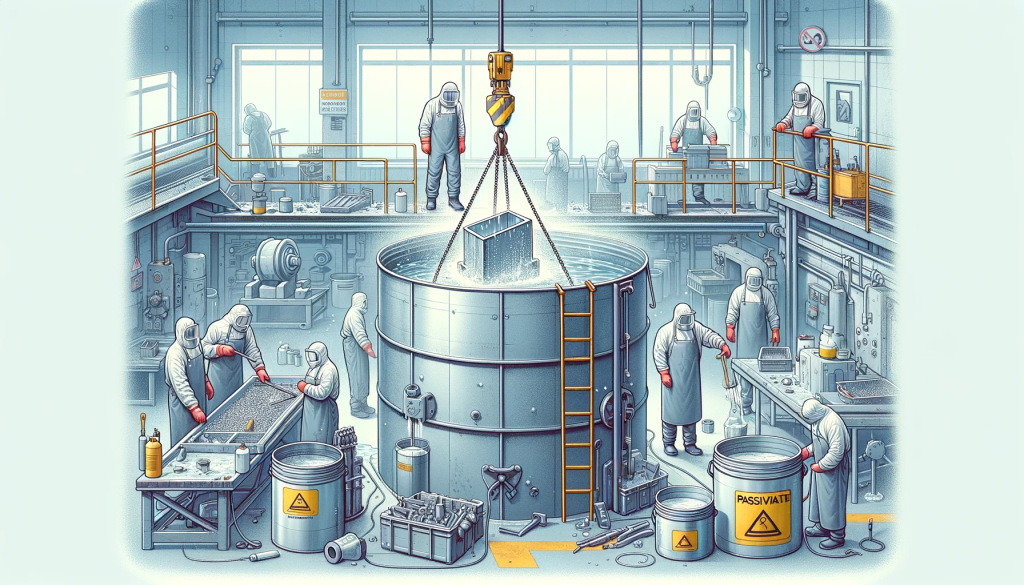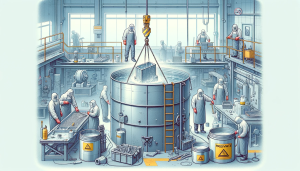
Exploring Nitric Acid (HNO3): Properties, Applications, & Environmental Impact
Share This Post Explore the Multifaceted World of Nitric Acid (HNO3) Nitric acid, a volatile and highly corrosive chemical, has been widely used in

When it comes to metal fabrication and maintenance, the terms “pickling” and “passivation” are frequently mentioned together. Their understanding can have a big effect on the longevity as well as the properties of metals.
These treatments use strong acids, such as hydrochloric acid or nitric acid, to treat the metal surface. Together with the removal of impurities, a protective layer is then formed on the treated area. We will explore these fundamental procedures more thoroughly in order to extend the working life of metal components.
As a necessary surface treatment for metal, pickling leaves the material smoothly textured with all impurities removed. It consists of immersing metals in a solution, often with hydrochloric acid, in order to get rid of rust, scale, and other pollutants.
One of the main elements in pickling is hydrochloric acid, which effectively dissolves undesired substances residing on the metal surface. This is how it has come to be an indispensable part of pickling solutions through its strong reaction with metal scales.
With its aggressive nature, hydrochloric acid is able to dissolve stubborn objects stuck to metal. If used correctly, it prepares the metal for further processing or finishing so that the surface is in an ideal condition.
Passivation is not pickling. Unlike pickling, it does not detract from the metal; instead, its surface is transformed in order to protect it against the environment. In this process, a passive layer is established to act as protection, generally from corrosion. With stainless steel as an example, this is primarily chromium oxide.
When dealing with stainless steel, nitric acid is frequently used as a passivation agent. It effectively takes off the metallic iron from surfaces, thus putting an oxide film on the metal faster than it would rust.
The formation of the chromium oxide layer is the foundation on which stainless steel’s corrosion resistance relies. This invisible layer is stuck to the surface of metal, and it is like an umbrella that corrosion can’t break through.
The pickling and passivation process involves several stages, typically starting with pickling to clean the metal. Following the initial treatment, passivation ensures that the metal remains protected from corrosion forces.
When pickling and passivation work together, they greatly prolong metals’ lifetimes. Pickling guarantees cleanliness; passivation gives protection; these factors are essential to how our final product will perform over time.
Without strict quality control, the operation of this treatment carries certain risks. If a pickling bath becomes contaminated or passivation is not properly rinsed off, irreparable damage can occur.
Alchemie Labs is widely known for the distribution of high-quality hydrochloric acid solutions, which are indispensable for successful pickling and passivation processes. Their products guarantee the removal of surface contaminants, while at the same time, the material’s integrity is maintained through the formation of a protective outer layer in order to prevent corrosion from penetrating deeper into the metal.
With a keen eye towards innovation, both the scale of production required for large operations and the accuracy needed for micrometer treatment are effectively served by Alchemie Labs. This includes the installation of surfaces with nanostructures.
The most important thing with these chemicals is good sense. All aspects of Alchemie Labs’ operations uphold safety and environmental standards.
A clean and corrosion-resistant surface is a basic requirement in metal production. Alchemie Labs sets an outstanding example of proper substances, giving information on good handling practices for hydrochloric nitric acid used in such crafts.
Understanding that these procedures are important and that the conditions they foster are not just beneficial to keep your metal products looking fresh, but it also instructs one in selecting treatments to whom the user owes rewards.
As a machinist veteran of the metal processing industry or someone just starting out, you can enjoy the great enhancement of function and efficacy that these treatments offer to metal components.
Reference

Share This Post Explore the Multifaceted World of Nitric Acid (HNO3) Nitric acid, a volatile and highly corrosive chemical, has been widely used in

Share This Post Hydrochloric Acid: The Importance of Purity for Metal Refining Hydrochloric acid has served as a tool for the refining industry since

Share This Post The Advantages Unlocked by Pickling and Passivation in Metal Treatment When it comes to metal fabrication and maintenance, the terms “pickling” and
Expect a friendly letter from us once a month. No spam.
Copyright © 2024 Alchemie Labs. All rights reserved.